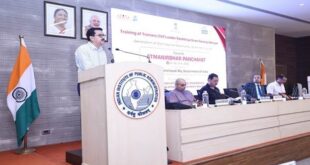The Ministry of Civil Aviation has released a draft National Air Sports Policy (NASP) that will require entities providing these services and their equipment to be registered, as well as be liable for penalties.
Important points:
- The policy proposes a two-tier governance structure for air sports in the country, which will include an apex governing body called the Air Sports Federation of India (ASFI) and associations for each air sport.
- The ASFI will be an autonomous body under the Ministry of Civil Aviation and will represent India at the Lausanne (Switzerland)-headquartered Fédération Aéronaautique Internationale (FAI) and other global platforms related to air sports.
- It will provide governance over various aspects of air sports, including regulation, certification, competitions, awards and penalties, etc.
- Each air sports association will lay down its safety standards for equipment, infrastructure, personnel and training, and specify the disciplinary actions to be taken in case of non-compliance. Inability to do so may lead to penal action by the ASFI.
- It is proposed that popular air sports attractions in the country such as Bir Billing in Himachal Pradesh, Gangtok in Sikkim, Hadapsar in Maharashtra and Vagamon in Kerala can be declared as a “control zone” for air sports in order to ensure the safety of other manned aircraft.
Objectives:
- The vision of the policy is to make India one of the top air sports nations by 2030.
- It envisages to promote the country’s air sports sector, by way of making it safe, affordable, accessible, enjoyable and sustainable.
- The policy seeks to leverage India’s potential for air sports and places a strong focus on ensuring international best practices in safety.
- It aims to promote domestic design, development and manufacturing of air sports equipment under the Atmanirbhar Bharat Abhiyan; waive import duty on equipment for a few years; as well as request the GST Council to consider rationalising the GST rate on air sports equipment to 5% or less.
SOURCE: THE HINDU,THE ECONOMIC TIMES,MINT
 Chinmaya IAS Academy – Current Affairs Chinmaya IAS Academy – Current Affairs
Chinmaya IAS Academy – Current Affairs Chinmaya IAS Academy – Current Affairs



